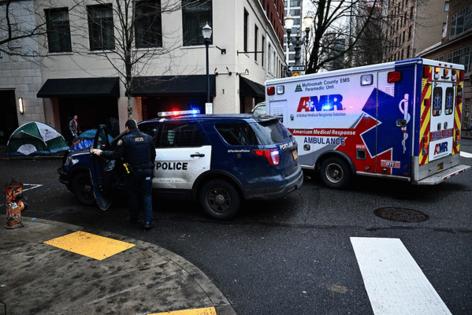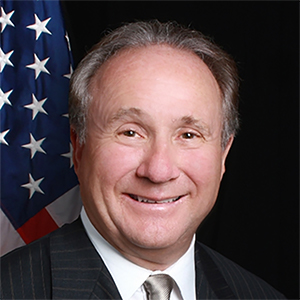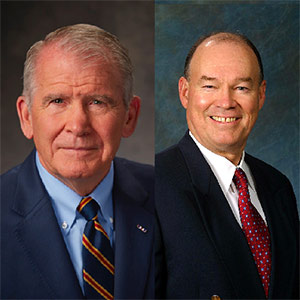Lisa Jarvis: Oregon had a bold plan to help drug addicts. Then fentanyl showed up
Published in Op Eds
This month, a brief, ambitious and many would say calamitous experiment came to an end: Oregon rolled back Measure 110, its policy decriminalizing the possession of small amounts of illicit drugs. Rather than handing out small fines with a nudge towards treatment, the police are once again giving misdemeanors to people who are found with opioids or meth.
What can we learn from this first-of-its-kind experiment in the U.S.? Many would argue that it showed us what not to do. But an honest assessment of what happened in Oregon paints a more complex picture.
Let’s start with what almost everyone agrees on. Decriminalization didn’t turn things around in Oregon. The state walked into the policy change, approved by voters in late 2020 and enacted in mid-2021, with one of the highest rates of addiction in the country. It also had one of the worst track records for access to treatment. And while funding was earmarked for mental health and substance use services under Measure 110, training a workforce and building an efficient infrastructure takes time. Four years later and the state still does not have nearly enough clinics or workers to support its goals.
As one drug policy expert told me, without near-perfect execution, the experiment seemed destined to fail. And a failure is what many would call it. Homelessness, crime and addiction all rose, straining public spaces. Social services, including treatment services and housing support, didn’t ramp up fast enough.
And there was a sharp rise in drug overdose deaths. Fatal overdoses were up by 50% in 2021 compared with the prior year, then continued to rise another 30% in 2022 and another 45% in 2023, based on provisional data from Oregon Health Authority.
The core premise of Measure 110 was that “a health-based approach to addiction and overdose is more effective, humane, and cost-effective than criminal punishments.” That decriminalization not only failed to spare lives, but seemed to cost many more of them, was considered the most damning evidence of its folly.
Those bleak numbers are indisputable. But decriminalization wasn’t the only big change in the state in 2020. A recent paper in JAMA Open Network points to a different culprit behind that surge in deaths: Fentanyl. The potent opioid permeated the drug supply in Oregon at the exact moment that the guardrails were lifted on possession.
The insidious impact of fentanyl on a community is by now well-known. As the drug spread from the East Coast to the Southeast and Midwest until finally reaching the West Coast, it left a terrifying body count in its wake. Since 2021, more than 100,000 people in the US have died from overdoses each year.
Researchers wanted to winnow out how much of the rising death toll in Oregon could be attributed to the policy change and how much was due to the arrival of fentanyl. The results of their analysis, which compared Oregon with states that lacked decriminalization, stunned even the study authors, says Brandon del Pozo, an assistant professor at Brown University, who led the work. The rise in deaths was entirely due to fentanyl. All of it.
“The buried lead of that paper is that drug reformers make plans and fentanyl laughs,” said del Pozo. “Oregon’s overdose increase was tragically and boringly typical.”
In other words, the main lesson of Oregon’s experiment isn’t that a public health approach to drug use can’t work. It’s that fentanyl makes everything about addressing substance use harder and more complicated. Even if the state’s decriminalization experiment had been run under the best of circumstances with the perfect set of supports (it was not), sparing lives would have been a challenge with fentanyl showing up at the same time.
That should serve as a reminder for others analyzing other drug reform efforts, del Pozo says. Researchers have to model for the impact of fentanyl in order to capture the true effectiveness of harm-reduction efforts like overdose-reversing naloxone or safe syringe sites.
It’s likely that the fallout from Oregon’s measure has chilled acceptance of any effort that seeks to reduce addiction by shifting the emphasis from punishment to public health.
That’s a shame. Oregon got a lot wrong, and Measure 110 shouldn’t be seen as the ultimate word on decriminalization. And the U.S. desperately needs to try new things to address addiction. Early data from the Centers for Disease Control and Prevention suggest that overdose deaths recently began to decline for the first time since 2018 — a shift that public health experts are still trying to understand, but could be due in part to better access to the opioid reversal drug naloxone.
That’s welcome news, but still somewhere in the realm of 100,000 people will die this year from a fentanyl overdose. We have such a long way to go to get things right.
____
This column does not necessarily reflect the opinion of the editorial board or Bloomberg LP and its owners.
Lisa Jarvis is a Bloomberg Opinion columnist covering biotech, health care and the pharmaceutical industry. Previously, she was executive editor of Chemical & Engineering News.
©2024 Bloomberg L.P. Visit bloomberg.com/opinion. Distributed by Tribune Content Agency, LLC.




























































Comments